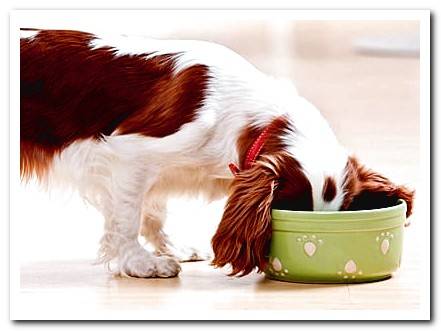
Among the different options that dog food brands offer us, we can find the well-known Light feed, which claims to gain less weight compared to other ranges.
However, it is not totally true, since although it is indicated as Light, it can actually gain even more weight than the rest of the normal ranges. Mainly due to a lousy composition in the formula, the ingredients.
From Dogsis we are going to explain what Light dog food consists of and how we can choose one that is really low in calories.
Index of contents
- 1 What is a Light feed for?
- 2 The Big Lie of Light Dog Food
- 3 How to choose a good Light feed?
What is a Light feed for?
One of the main functions of the Light feed is to achieve slim down an overweight dog, due to the large number of overweight dogs that exist in countries like Spain.
Being overweight directly affects the dog’s health, mainly in its circulatory system and joints, so we must prevent our dog from gaining excess weight.

Light feed is also used in adult dogs with little energy activity, although in this case instead of calling it Light they call it Senior, but in the case it is the same, a feed with few calories.
Dogs that have undergone surgery and need rest, are also usually fed with a low-fat feed, a Light feed, to prevent them from gaining weight while recovering from their intervention.
There are those who even feed their dog with Light feed simply in order to give it more quantity, because it is a glutton, although obviously this practice is not the most recommended.
The Big Lie of Light Dog Food
Let’s start from the beginning to explain the great lie of Light dog food. As its name suggests, a Light feed must be a low-calorie feed, to help maintain a dog’s weight or even reduce it.
But the reality is that currently they give the name of Light to any dog food that is low in fat, regardless of the rest of the ingredients, a big mistake.
The most common practice by feed manufacturers is to reduce the level of fat in the feed and label it with Light. And curiously, these feeds generally contain a greater amount of cereal.
We must not forget that cereal and legumes are sources of carbohydrates and as such, they are very fattening. So … What is the point of reducing the percentage of fat if we are feeding our dog with a lot of carbohydrates? well none, actually.
Let’s see an example obtained from the labeling of a Light feed:

If you look, it is a product full of cereals such as corn, barley, wheat, corn gluten … All these cereals are a great source of carbohydrates that, rather than helping the dog lose weight, will help it gain weight.
How to choose a good light feed?
The only way to correctly choose a good light feed for our dog is to get involved and investigate the product labeling. We must bear in mind that the majority of Light feed is not really, so we will have a complex job ahead.
A good light feed must contain a large amount of meat. Animal protein is not fattening and excess protein is eliminated through urine and faeces, which is why meat is the best ingredient that can and should contain good light feed.
You should not have many cereals or legumes, here we should not be fooled since many feeds claim to be cereal-free but actually inflate them to legumes … another big mistake. We should simply look for one that contains little amount of cereals, and if it is only rice, better than better since it is very digestible.
We must avoid excess fat, the fat is added to the feed once the kibbles have been made, to give them odor and flavor, thus making them more palatable to dogs. However, this type of fat is very fattening, so we should look for a feed with a low amount of fat.
Look at calorie level is critical, most quality manufacturers show the percentage of calories that each feed has. A low calorie diet should not contain more than three thousand five hundred calories per kilo. Although we insist, look closely at the cereals … they should not abound.
If you liked the article and found it useful, help us keep the web going !: Give “Like” or Share it on social networks 🙂 Thank you!
